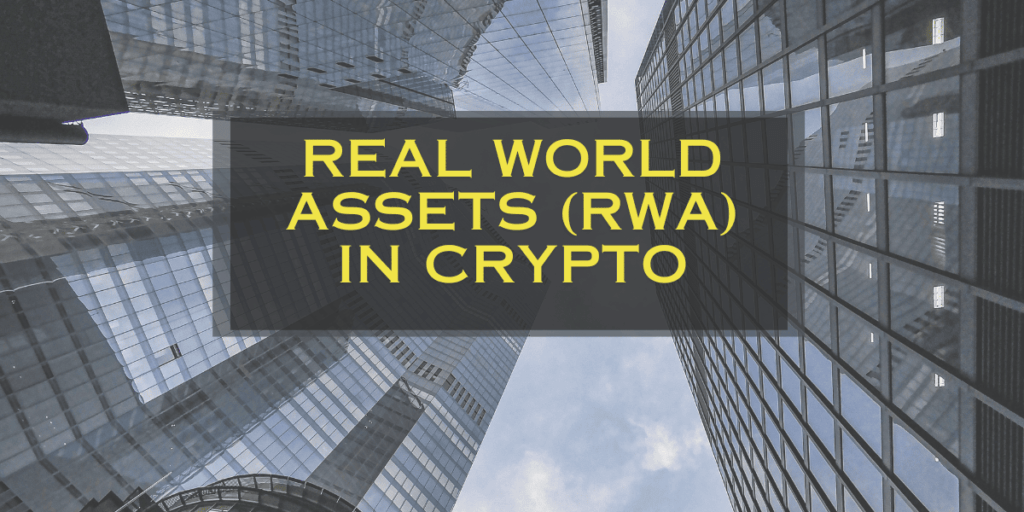What are Real World Assets in Crypto?
Real World Assets (RWAs) are the physical objects which are tangible. For that matter a pencil in you home or a car or a piece of land are Real World Assets or simply RWAs.
Contrary to the tangible assets or real world assets are non-tangible assets crypto-currencies and Non-Fungible Tokens. They have a digital or virtual reality.
The concept of real world assets in crypto is bringing the tangible assets on the blockchain network. Each real world asset is thus having a unique digital identity.

Any change with regard to the ownership or price of the real world assets is mirrored through its digital presence. This is done by tokenization of the real world assets.
The process of Tokenization creates a digital token of a tangible on the blockchain.
Consider an example: Can you buy a Monalisa Panting? Probably not. But how it would be if you can purchase a small part of it. This can be done through the tokenization of Monalisa Painting. Creating 1,00,000 token of the asset, for example, can make us to be the owner of 1/1,00,00th of the Monalisa Painting.
As the market price of the actual assets increases or decrease, the value of their corresponding tokens changes accordingly.
What are the Benefits of Tokenizing Real World Assets?
Tokenization of real world assets has following benefits:
- Transparency-with regard to the value, originality, transaction history etc.
- Proof of Ownership-It means holding tokens of real world assets authenticates its real ownership.
- Liquidity- No liquidity is needed to convert the asset into cash and vice-versa. It makes buying and selling of the real world assets efficient.
- Fractional Ownership- With tokenization of real world assets you can hold a fraction of total supply of a coin. It indirectly gives you the fractional ownership of real world asset proportional to the fraction of token you are holding.
- No Geographic Hinderances- One has to move across the international boundaries to purchase some specific real world asset. The tokens representing the real world assets lie on the blockchain network. So anyone interested in buying the same ca do so from the comfort of his home.
- Trade History- Transactions on the blockchain network are immutable. It means that one can easily track the previous trade history of a particular real world asset token before making any trade decision.
How Does RWA(Real World Assets) in Crypto Works?
It simply involves the process of tokenization of real world assets and bringing them on the blockchain network.
This way the gap between the real world and the virtual world is fulfilled. Tokens, representing the real world assets, lying on the blockchain can bought and sold quite like the tangible assets. However, the process of buying and selling a lot more simpler.
What is an example of Real World Assets in Crypto?
In crypto real world assets are the one which have been tokenized and bought on to the Blockchain Network.
The examples include:
- Real Estate- like Land and Buildings.
- Commodities-like Petroleum and Automobiles.
- Rare Metals-like Gold and Platinum.
- Infrastructure Projects-like Hydel Power Projects
- Art and Collectibles-like rare artworks and antiques.
Real-World Assets Crypto List/Real World Assets Crypto Projects
Here are a few crypto tokens/projects dealing with the real world assets:
- Ondo(ONDO)
- Maker(MKR)
- Internet Computer(ICP)
- Ribbon Finance(RBN)
- Avalanche(AVAX)
- Chainlink(LINK)
- Synthetix(SNX)
- MANTRA(OM)
- Reserve Rights(RSR)
- XDC Network(XDC)
Therefore, the crypto coins related to the real world assets are the present and near future of crypto-world. Early investors in the real world asset token can reap maximum benefits.
We are still into the crypto field! Cheers!
Read Also: Is ICP Coin a Good Investment?
